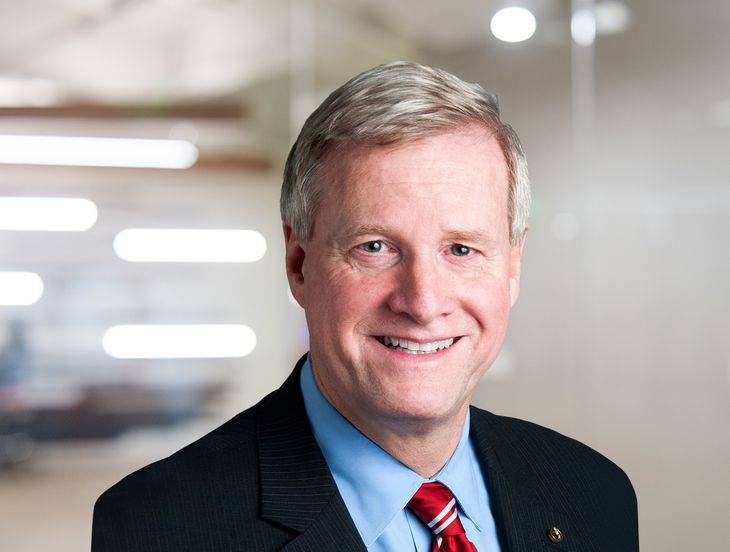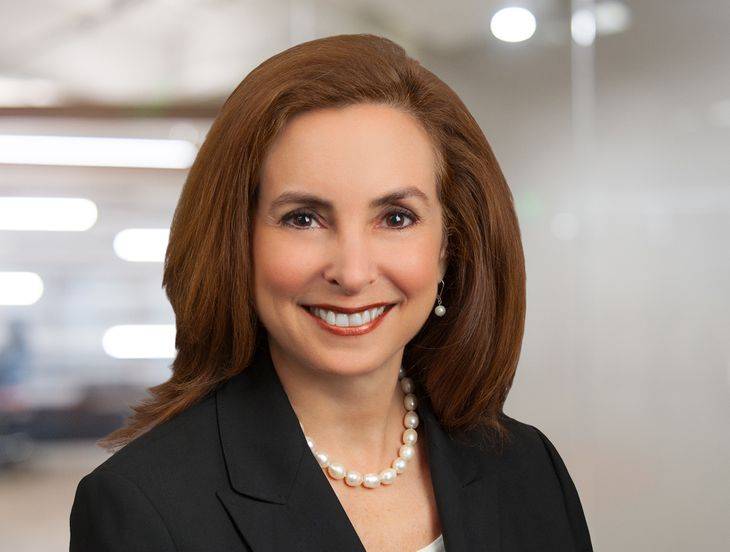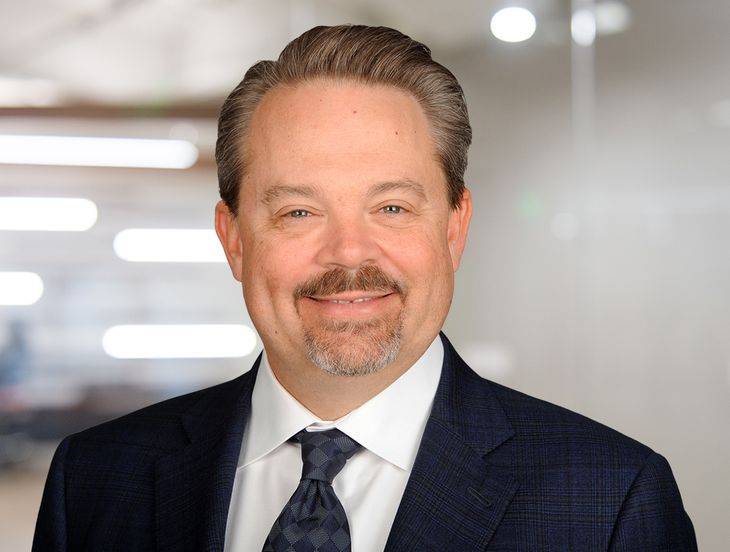Scalia To Take Labor Department Reins: What Does It Mean For Employers?
Insights
7.22.19
The news that President Trump selected Eugene Scalia to take over as Labor Secretary late last week caught some employers by surprise; after all, it was just a week ago that we were analyzing the track record of the soon-to-be-acting Secretary who many expected to helm the Department of Labor for an extended period of time. But now that it appears we have a likely successor in place to take over for Alexander Acosta, all employers are turning their attention to the same issue: what does this transition mean for the business community? We’ve once again assembled the opinions of some of our firm’s foremost thought leaders – including one of our partners who recently worked side-by-side with Scalia on a significant workplace law matter – to help provide a glimpse into what you should expect from the U.S. Department of Labor. The consensus opinion? Scalia will aggressively battle against intrusive and overreaching regulations that hamstring the country’s employers, and will quickly endear himself to the business community.
The Basics: What Does The USDOL Do?
The Secretary of Labor is a Cabinet-level position heading the U.S. Department of Labor (USDOL), one of the federal agencies that has the widest and deepest impact on employers across the country. The agency impacts the inner workings of the American workplace on a daily basis. It enforces laws involving employers and unions, and more importantly, develops binding regulations and directives for a variety of workplace laws. It encompasses over 30 agencies, boards, offices, and programs that each have a specialized role when it comes to labor and employment law.
The three most commonly known agencies and offices within the USDOL are the Wage and Hour Division (WHD), the Occupational Safety and Health Administration (OSHA), and the Office of Federal Contract Compliance Programs (OFCCP). However, the USDOL also has a role to play with respect to family leave, joint employment, pay equity, and immigration law; employers may also be interested to follow the goings-on which will take place at the Office of Labor-Management Standards (OLMS) – an office that could play a vital role over unionized workplaces in the coming years.
Who Will Be Taking Over?
Assuming the Republican-led Senate approves the choice, your next Secretary of Labor will be Eugene Scalia. If his name sounds familiar, that’s because he is the son of the former Supreme Court Justice Antonin Scalia, who passed away in 2016.
Unlike the acting Secretary Patrick Pizzella, who assumed the role on July 19 and will remain the temporary chief of the department until the confirmation process is complete, Scalia has only briefly served in the federal government and instead spent the majority of his professional life in private law practice. During this time, Fisher Phillips partner Travis Vance (co-chair of the firm’s Workplace Safety and Catastrophe Management Practice Group) worked with Scalia as co-counsel on a significant regulation amendment project with national implications. His opinion? “Gene is brilliant,” says Vance. “He’s one of the most insightful and gifted attorneys with whom I’ve had the privilege to work. He has developed quite the career advising clients on issues relating to the federal agency rulemaking process. This will serve him well at the Department of Labor. I expect him to use his significant experience representing clients in this field and take a practical approach to amending and repealing regulations that may have been improperly adopted or overreach.”
Scalia’s credentials are impeccable. He has a law degree from the University of Chicago and received his MBA from the Wharton School at the University of Pennsylvania. For the majority of his career, he has worked for a large and well-respected law firm in Washington, D.C. and Los Angeles, focusing his practice on labor and employment law and administrative law. However, he has had three brief stints in federal government service.
Soon after graduating law school, he spent two years as an aide to Education Secretary William Bennett during the Reagan administration. Several years later, during the George H.W. Bush administration, he worked as Special Assistant to Attorney General William Barr for a little more than a year. And finally, in 2002, he was the solicitor of the Department of Labor for 12 months, serving as the chief legal office for the department he is now about to lead.
Pay Equity And Affirmative Action
The big question on most employers’ minds right now is the status of the revised EEO-1 reports and whether you will need to produce a mountain of pay data and hours-worked information (Component 2 data) for both 2017 and 2018 by the current September 30, 2019 deadline. While the Equal Employment Opportunity Commission (EEOC) has, to date, been at the forefront of the fight against this cumbersome requirement, an energized USDOL could also play a role. “The EEO-1 reports are actively used by both the EEOC and by the USDOL,” says Cheryl Behymer, co-chair of the Fisher Phillips Pay Equity Practice Group, which means that the Labor Department could also insert itself into the legal fight over the validity of the beefed-up EEO-1 reports. Behymer reminds us that the while the initiative is within the purview of the EEOC and not the USDOL, it was spurred in part by a presidential memorandum directing the USDOL to increase data collection related to wages and gender. So what could this latest development mean for the impending pay data requirements?
“Scalia has demonstrated himself to be somewhat of a warrior against overreaching regulations that overburden the business community,” Behymer says. “And if there has ever been a more burdensome and overreaching regulation than the beefed-up EEO-1 reports, I haven’t seen it in my lifetime. If Scalia could somehow navigate a stay of this requirement, he would immediately endear himself to the business community.”
Behymer notes that a decision to either force an emergency hearing on the pending appeal to push for a stay to be reinstated, or taking any other procedural step that would relieve employers from this looming deadline – as the portal for uploading the information opened last week in advance of the fast-approaching September 30 deadline – would need to happen quickly for it to be effective. “While most employers are waiting to begin producing the pay data to the government in the hopes that the regulation will be put on ice or struck down, the clock is ticking, and there’s not much more time to wait.”
Behymer also chairs the firm’s Affirmative Action and Federal Contract Compliance Practice Group. In this capacity, she and others in the firm help employers doing business with the federal government (federal contractors and subcontractors) comply with certain nondiscrimination laws, especially those enforced by the Office of Federal Contract Compliance Programs (OFCCP). According to Behymer, federal contractors would benefit by a decision to rescind the 3,500 Corporate Scheduling Announcement Letter (CSAL) letters issued in March 2019 notifying them that they have been selected for an audit during the upcoming cycle. “Instead,” Behymer says, “Scalia may require the OFCCP to direct its efforts to increasing training opportunities for federal contractors, instead of diverting such significant resources to enforcement activities.”
Workplace Safety
With respect to OSHA and workplace safety and health issues, you can expect the agency to focus more on compliance assistance to balance against enforcement activities under Scalia’s leadership. That’s according to Edwin Foulke, Jr., former head of OSHA during the Bush administration (April 2006 to November 2008), and a partner in the Fisher Phillips Workplace Safety and Catastrophe Management Practice Group. And Foulke believes that Scalia has the background to get things done at the agency level.
“Having been the Labor Solicitor,” Foulke says, “Scalia is well aware of the regulatory process and will be able to move whatever pending standards he want to move.” Foulke estimates that the career government officials installed at the Labor Department will be less likely to oppose Scalia’s initiatives given that they will trust he will know how to get things done.
Scalia already has direct experience waging battles against intrusive safety regulations. Foulke points to the battle Scalia fought in 2000 against the proposed ergonomic standard that the Clinton administration wanted to put in place. Scalia led the charge against this regulation, calling it a “vague and subjective rule” that “would afford little benefit to workers because it is based on thoroughly unreliable science.” The rule was quickly scrapped by Congress but the battle “cemented Scalia as a strong advocate for the business community,” said Foulke.
Wage And Hour Division
One area that may not see a radical change in direction is wage and hour law. That’s according to Ted Boehm, a partner who practices in the firm’s Wage and Hour Law Practice Group. “We have a pretty good idea of the Labor Department’s regulatory agenda as it relates to upcoming wage-hour activity,” he says. “What we don’t know yet is how Scalia will prioritize that agenda. With one notable exception: it seems a safe bet that the USDOL will issue its final version of the “overtime rule” so that it will take effect by January 2020, the estimated effective date in the earlier proposed rule.”
Joint Employment
Several months ago, the USDOL proposed a four-factor balancing test that it wants used to determine whether companies are joint employers – equally liable for liability under federal wage and hour laws. If adopted, it may result in fewer businesses being found liable for minimum wage, overtime, and other similar liability under the Fair Labor Standards Act (FLSA). The proposed rule is intended to reduce uncertainty and inconsistency in court and agency decisions with respect to joint employer status. However, according to John Polson, chair of the firm’s Staffing and Contingent Workers Practice Group and a member of the firm’s Management Committee, the language of the proposed rule needs refinement in order to accomplish those goals with respect to Professional Employer Organizations (PEO) and other human resources outsourcing organizations.
Polson notes that the proposed rule implies that a single factor in the four-factor balancing test, such as the basic act of maintaining employment records, may be sufficient to establish joint employer status. The proposed rule also contains several “catch-all” provisions that may support joint employer status even when the four-factor test does not lead to a joint employer finding. If these issues are not addressed, the proposed rule could lead to more uncertainty and inconsistency, not less, in the context of PEO and human resources outsourcing.
Family And Medical Leave
As a management-side employment lawyer who has spent a career representing businesses and associations seeking to strike down or limit regulations considered to be overreaching, Scalia might drive the agency to propose new Family and Medical Leave Act (FMLA) regulations that might reduce the administrative burdens on employers while still protecting employees’ rights to take leave. That’s according to Christine Howard, one of the partners on the firm’s Management Committee who regularly advises and defends employers on FMLA matters.
She says she expects Scalia’s experience in defending FMLA claims and related leave laws to place him “ahead of the curve” understanding the administrative burdens imposed by the FMLA regulations. “Given his know-how in narrowing the reach of expansive regulations,” Howard says, “the USDOL might take a hard look at the more onerous FMLA regulatory requirements that exceed what he believes the law permits his agency to impose.”
Likewise, Howard expects that Scalia will continue the recent resurgence of opinion letters being issued by the USDOL. “Employers have welcomed the agency’s renewed role in providing direction on a myriad of complex FMLA issues, which had ceased under the prior administration,” she says. “I see no reason why that would stop under Scalia’s leadership.”
Immigration
While most employers are aware of the involvement of the federal government in workplace immigration matters, not all are aware of the fact that the USDOL plays a role in enforcing federal immigration policy. And according to Shanon Stevenson, co-chair of the Fisher Phillips Global Immigration Practice Group, there could be a slight change in focus under Scalia’s leadership. “We expect worksite enforcement actions, including audits of employers’ H-1B, H-2B, and H-2A programs, to continue at their current heightened levels. However, we do expect more efficient resolutions of audits under Scalia.”
The USDOL is responsible for processing quite a few immigration-related programs. It handles the Labor Condition Application step, which is a prerequisite to the filing of the H-1B with the U.S. Citizenship and Immigration Services (USCIS). With respect to green card cases, the USDOL handles the PERM/Labor Certification process, which is the first step in most of the employment-based green card cases. Stevenson believes this is another area where things could change under new leadership. “He may tackle the overbroad and sometimes poorly drafted immigration statutes relied on by the government,” she says. “He may be the one that finally modernizes the process and system employers now use to file PERMs, including simplifying the steps involved in recruiting U.S. workers and what actions an employer needs to take to get the PERM approved.”
Office Of Labor-Management Standards
“You have to remember that Scalia is a management-side labor lawyer,” says Todd Lyon, co-chair of the Fisher Phillips Labor Relations Practice Group. “Given his long background as an advocate for employers, I have every reason to believe he will position the USDOL, to the extent he can, to again strike a balance and even the playing field to give employers the benefit of the doubt.” But you may be asking yourself: what does the USDOL have to do with traditional labor law?
Most employers are unfamiliar with the Office of Labor-Management Standards (OLMS), an office in the USDOL charged with the mundane-sounding task of managing the receipt of funds by labor unions. However, it has the power to investigate union payments to ensure they are legitimate. And while this office has generally steered clear of controversy and made little impact on the business community in recent years, Lyon expects things could be different under Scalia. “As a management-side advocate, I’m sure Scalia has been witness to unions’ expenditures for political reasons, especially when employees have had no say whether they want their dues monies used for those purposes. And he could decide enough is enough and take a tougher stance on these activities,” says Lyon. And what kind of impact would that have? It would help both employers and workers, Lyon says. “Greater transparency in this area will allow employees the ability to decide whether union leaders are appropriately spending their money, which can only be a good thing.”
Conclusion
We will continue to monitor further developments at the USDOL and provide updates regarding all of these matters of interest, so you should ensure you are subscribed to Fisher Phillips’ alert system to gather the most up-to-date information. If you have questions, please contact your Fisher Phillips attorney.
This Legal Alert provides an overview of agency positions and predictions. It is not intended to be, and should not be construed as, legal advice for any particular fact situation.
Related People
-
- Cheryl L. Behymer
- Senior Counsel
-
- Edwin G. Foulke, Jr.
- Partner
-
- Christine E. Howard
- Partner
-
- Todd A. Lyon
- Partner
-
- Richard R. Meneghello
- Chief Content Officer
-
- John M. Polson
- Chairman & Managing Partner
-
- Shanon R. Stevenson
- Partner
-
- Travis W. Vance
- Regional Managing Partner








